#Ernst May
Explore tagged Tumblr posts
Text

House (1925-26) built for himself in Frankfurt/Main, Germany, by Ernst May
215 notes
·
View notes
Text
Mart Stam & Ladislav Zak, Villa Palička - Prague, 1932









#art#avantgarde#architecture#design#constructivism#prague#modernism#mart stem#ernst may#ladislav zak
160 notes
·
View notes
Photo
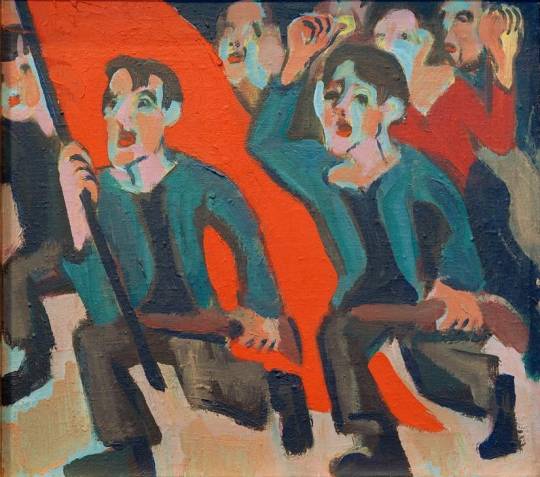
1 May Revolution - Ernst Ludwig Kirchner, n/d.
German , 1880 - 1938
Oil on canvas, 54 x 48 cm.
159 notes
·
View notes
Text
BEN FANKHAUSER WAS ERNST??????? I CANT TELL WHETHER I HATE THIS OR NOT ITS SO WEIRD ISADFKMLASDF IM WATCHING HIM AND DJIOASFKMFSd
#ben fankhauser#spring awakening#ernst robel#it may be because of the directing though but i dont think i like it very much#also this means that andy mientus and ben fankhauser have kissed which is just too much for my gay little brain to handle
9 notes
·
View notes
Text
desperately want to talk to someone about books/the stuff I’m reading
#especially Flannery O’Connor and southern gothic in general and writing in that genre!#or Rainer Maria Rilke#or Anne Carson#those are my big three right now#though I am also really wanting to read this book I found in Asheville about max ernst told from the POVs of his lovers#and I have a longgg tbr#also very into regional fiction from NC#also the south in general is fine but#I’m trying to be a North Carolinian writer specificay#specifically*#I’ve got a few I’ve been meaning to read by NC writers#also vampire stories!!!!#and regional ghost stories/local legends and lore#I’m veryyyy into folklore especially southern#and romance of course I’ve been reading a lot of romance lately especially regency#but I want to turn my attentions towards books that will help me grow as a writer#because I rlyyyy want to grow#I feel kinda stagnant lately and haven’t written a story since … may or maybe April#anyway#talk to me about books!!
6 notes
·
View notes
Text
If I Had a Million



MGM showcased its stars in GRAND HOTEL (1932) and DINNER AT EIGHT (1933), while Paramount did much the same with ALICE IN WONDERLAND (1933) and IF I HAD A MILLION (1932, Criterion until last night). Though the latter isn’t as lustrous as MGM’s projects, it sure is a lot of fun. Disgusted with friends and family, millionaire Richard Bennett decides not just to leave his fortune to eight complete strangers, but to deliver the money personally. There follow eight segments of varying quality in which he delivers checks to China store clerk Charlie Ruggles (a delight as usual), prostitute Wynne Gibson, forger George Raft, retired vaudevillian Alison Skipworth (fortuitously married to W.C. Fields), death row inmate Gene Raymond (godawful), bookkeeper Charles Laughton, marine Gary Cooper (talking rapidly for a change) and the magnificent Dame May Whitty. The prologue and epilogue are gracefully directed by Norman Taurog, whose camera moves are to be treasured. Comedy veteran Norman Z. MacLeod directed Ruggles as a clerk tired of having his salary docked for breakage and saddled with nagging wife Mary Boland (the two were a popular team for a while). He also directed Fields and Skipworth, who are hilarious together as they use her riches to get revenge on road hogs (it would take more than a million to do that in Atlanta). Whitty’s segment, directed by the little-known Stephen Roberts, paints a grim picture of life in a home for elderly women and features an exaltation of beautiful character actresses. But the highlight is Laughton’s segment, directed by Ernst Lubitsch. It’s a masterpiece of restraint by both actor and director, setting up one of the film’s most satisfying punchlines (and the rare joke that’s as funny when you don’t know what’s coming as it is when you do). Segments featuring Cary Grant, Carole Lombard, Fredric March, Miriam Hopkins and Sylvia Sidney were either left unfilmed or abandoned unfinished. For the Fields episode, Joseph L. Mankiewicz created what would become the comic’s catchphrase, “My little chickadee,” which Fields bought from him for $50.
#omnibus films#all-star films#pre-code films#charles laughton#w.c. fields#gary cooper#may whitty#charlie ruggles#george raft#ernst lubitsch#joseph l. mankiewicz
2 notes
·
View notes
Text
Bond Villain fancast
Fun fancast where I fancast iconic Bond villains for the modern day or if they were apart of the Craig era/next Bond's era
BD Wong as Dr Julius No
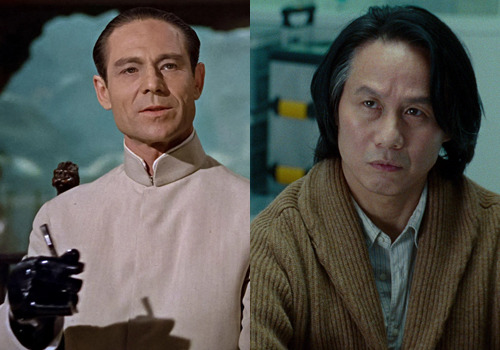
Michelle Gomez as Rosa Klebb

Alexander Skarsgard as Red Grant

Brendan Gleeson as Auric Goldfinger
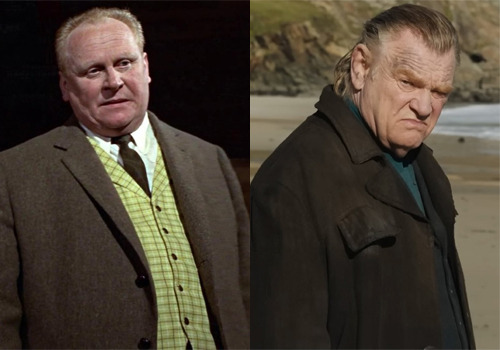
Benedict Wong as Oddjob

Kyle MacLachlan as Emilio Largo

Christoph Waltz, Pedro Pascal and Mark Gatiss as Ernst Stavro Blofeld
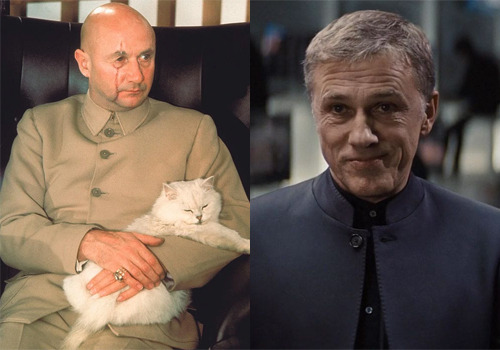

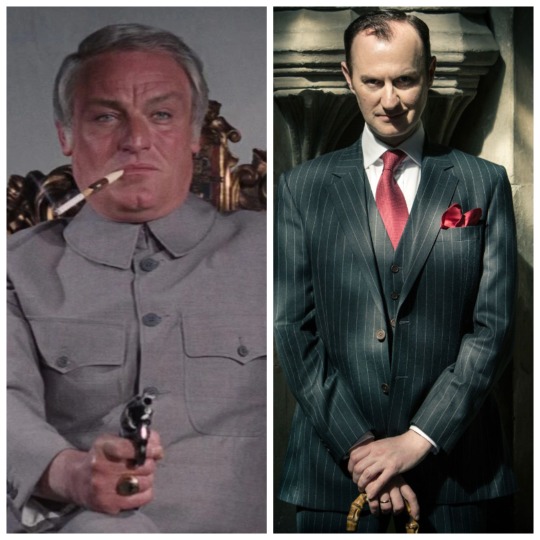
Jason Schwartzman as Mr. Wint
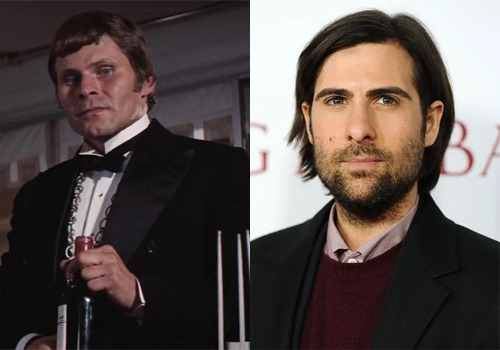
Jesse Plemons as Mr. Kidd

Daniel Kaluuya as Dr Kananga/Mr Big

Rory McCann as Jaws

Chiwetel Ejiofor as Francisco Scaramanga

Stellan Skarsgard as Karl Stromberg
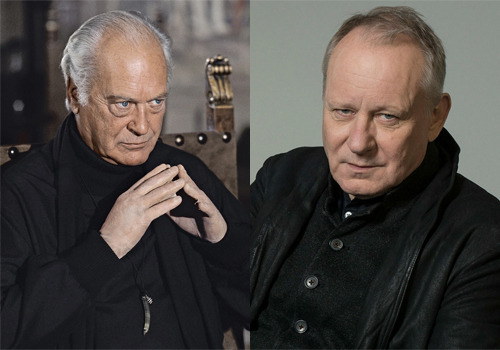
Peter Dinklage as Hugo Drax

Mark Strong as Aris Kristatos
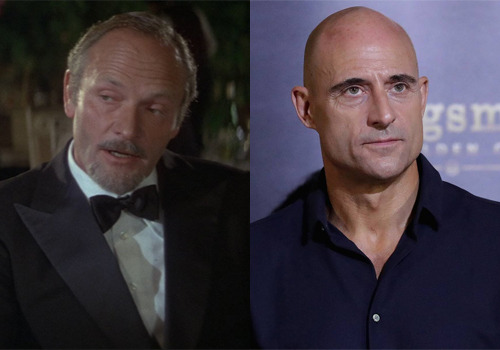
Oded Fehr as Kamal Khan
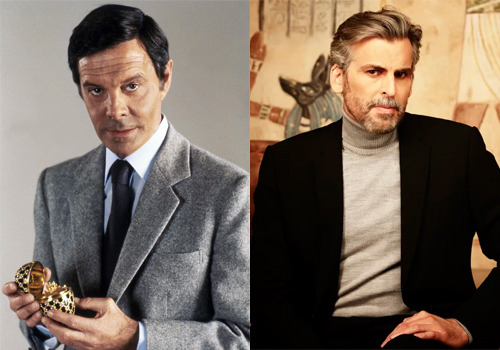
John Malkovich as General Orlov

Jade Cargill as May Day

Benicio del Toro as Franz Sanchez

Timothy Granaderos as Dario

Jean Dujardin as Georgi Koskov
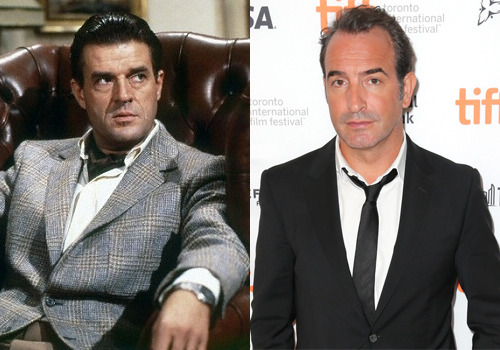
Georges St-Pierre as Necros

Dean Norris as Brad Whittaker
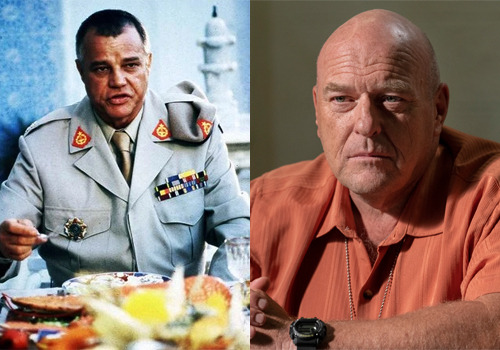
Ewan McGregor as Alec Trevelyan

Jodie Comer as Xenia Onatopp

Jeremy Irons as Elliot Carver

Daniel Radcliffe as Renard
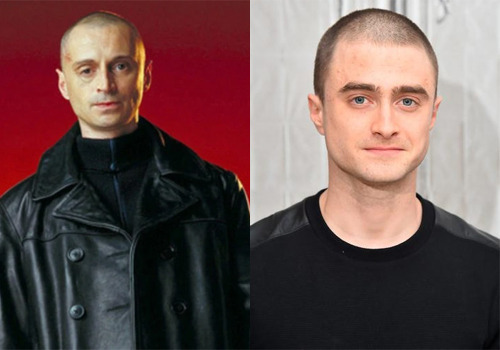
Daisy Ridley as Elektra King
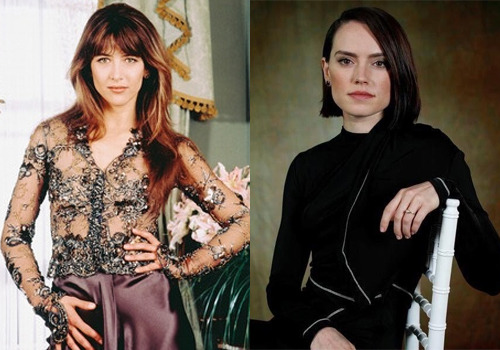
James Norton as Gustav Graves

Andrew Koji as Zao
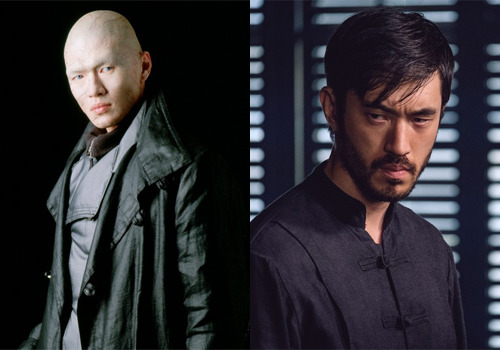
Florence Pugh as Miranda Frost

#Bond Villains#Fancasts#James Bond#Dr No#Ernst Stavro Blofeld#Rosa Klebb#Red Grant#Auric Goldfinger#Oddjob#Emilio Largo#Mr Big#Jaws#Francisco Scaramanga#Karl Stromberg#Hugo Drax#Aris Kristatos#Kamal Khan#General Orlov#May Day#Franz Sanchez#Dario#Georgi Koskov#Necros#Brad Whittaker#Alec Trevelyan#Xenia Onatopp#Elliot Carver#Elektra King#Gustav Graves#Miranda Frost
4 notes
·
View notes
Text
Le Giornate del Cinema Muto 2024: Pordenone Post No 6
Wouldn’t you like to go Behind the Scenes with DW Griffith and Florence Lawrence? I sure would, that’s why I was bright and early at the Verdi this morning for the 1980 Biograph package. Behind the Scenes, per the catalogue is the “happy exception” among the 1908 output. Well it certainly had punch. A distraught mother must tear herself from her daughter’s sickbed to kick her heels and shake her…
#Ben Carré#DW Griffith#Ernst Lubitsch#featured#feminist cinema#Florence Lawrence#GCM43#Giornate del Cinema Muto#Lew Cody#Marie Prevost#May McAvoy#Pordenone Silent Film Festival#silent film
0 notes
Text
btw I know no one asked but I feel compelled to share my top 3 scrunkliest people list
Rinus Gerritsen
Andy Taylor (Duran Duran)
Ernst Jansz
#Rinus Gerritsen#Andy Taylor#Ernst Jansz#MUTUALS OR NON MUTUALS THAT MAY BECOME MUTUALS#PLEASE if you ever see any of these guys mentioned in a post on your dash#REBLOG AND TAG ME!!!!!!!!#my serotonin boys#omg. the serotonin brothers#have to draw it tomorrow maybe
0 notes
Text
„Aus der 🇩🇪 #Politik waren #Altkanzler #Schröder mit seiner Frau So-yeon Schröder-Kim, der frühere #SED-Generalsekretär Egon #Krenz, Klaus #Ernst von der Linkspartei sowie die #AfD-#Politiker Alexander #Gauland und Tino #Chrupalla erschienen.“ (Empfang in der 🇷🇺 Botschaft zum 9. Mai)
0 notes
Text

Leonora Carrington, April 6, 1917 – May 25, 2011.
With André Breton, Marcel Duchamp, and Max Ernst, who are standing behind Morris Hirshfield’s Nude at the Window (Hot Night in July). 1942 photo by Hermann Landshoff.
#leonora carrington#andré breton#marcel duchamp#max ernst#hermann landshoff#art#painting#morris hirschfield
852 notes
·
View notes
Text
@showbiziz i cant reply as a coment so i am just rebloging as my answers to the asks :-)
Please forgive me, my on the play is limited 😞😞
1. Hanschen is strangely different play from musical in all honesty i have no idea how they created his musical counterpart and turned him into…that. They quite literally created a new character with the same name
2. Leading onto that i guess in the musical they just wanted to make hanschen and ernst into a joke in the musical, and so they had to make hanschen into the musical weirdo that he is. Whereas in the play you can tell that he is literally just a teenage boy with a crush and he actually shows alot of care for ernst in the play!! Will never forgive st*ven sater for what he did to them
3. Melchior and Wendla - Dont know how or why they tried to make the hayloft scene into a loving scene between melchior and wendla. Atleast play melchior atleast recognises what he had done to wendla and how it ended “i am her murderer!” Wheras musical melchior believes that what he did was an act of love and rebellion “despite what those whispering elders say….” “…we must let ourselves live and breathe again in that paradise”
4. The masked man ending was definitely something i enjoyed. Having moritz try and guide melchior away with him and the masked man being there to stop him. As a symbol of life and rebirth. Although the ending of moritz and wendla finding melchior and then melchior deciding to live on for them and their memory so they can live on is also something i enjoy.
Send me spring awakening asks pretty please im bored 😞😞🙏🙏
#spring awakening#melchior gabor#wendla bergmann#hanschen rilow#ernst robel#as i said my play knowledge is limited so these may not be like my full thoughts
5 notes
·
View notes
Text

Heinkel He 280 V3 (GJ+CB). The He 280 was the world's first jet fighter, the original first generation jet fighter. Its first powered flight was on 30.3.1941. With a speed of 512mph and armed with 3 20mm or 30mm cannons, this aircraft could have been in service a year before the Me 262, late '43? Maybe just in time to make a difference against the mighty 8th Air Force? Indifference and interference by Ernst Udet and Erhard Milch, NOT GÖRING, cost Germany dearly and only nine pre-production units were made. This particular craft first flew on 5 July 42, and what was left of it (the tail), was captured in May '45 in Austria. For more, see my Facebook group - Eagles Of The Reich
159 notes
·
View notes
Text

Which Witch?
This moment in "Donnie vs. Witch Town" has repeatedly caught my notice, and I’ve now recovered enough to break it down!
First off, here’s the list verbatim:
Visitors Suzy Bannion Heather Donahue Nancy Downs Minnie Castevet Katia Vajda Miss Anjelica Ernst Samantha Stephens April O’Neil
Unfamiliar names plus cursive plus a lack of high-quality stills meant decoding this took a little longer than expected.
I have attempted to minimize spoilers for the mentioned horror movies when possible, but in pursuing two contradictory goals, I have accomplished both imperfectly. C'est la vie!
Please note: I am by no means a film buff, so feel free to add any relevant context!
Oh, the Horror . . . [films]!
"Suzy Bannion" would be a reference to the 1977 film Suspiria in which Suzy, a ballet student, finds herself investigating a supernatural coven of witches.
"Heather Donahue" is a homage to the 1999 "found footage" movie The Blair Witch Project*, wherein three student filmmakers investigate a legend of a witch in the woods.
"Nancy Downs", from the 1996 R-rated film The Craft, is one of a trio of students rumored to be dabbling in witchcraft.
"Minnie Castevet", on the other hand, hails from the dark 1968 film Rosemary’s Baby (based on the book by Ira Levin), wherein Minnie’s character is suspected of being a member of a coven.
"Katia Vajda", originates from the 1960 film Black Sunday, (loosely based on Nikolai Gogol’s short story "Viy"). Katia was accused of being a vampiric witch and executed by her brother—but that isn’t the end of her story.
"Miss Anjelica Ernst" simultaneously references Roald Dahl’s 1973 novel The Witches and its 1990 film adaptation of the same name. One member of the notorious child-hating coven is the Grand High Witch, Eva Ernst, who was portrayed by Anjelica Huston on the big screen.
"Samantha Stephens" lives the life of a "good witch" in the 1964 television series Bewitched.
Special Bonus!
"Abigail the Good", founder of Witch Town, may be an allusion to the character "Abigail Pershing" from the 2015 television show Good Witch.
I’ll go ahead and credit my dad as my research assistant; he described these references as "deep cuts".
And really, what higher praise is there?
*For more about Heather Donahue, the producer and writer of the sitcom The High Country, check out this article by GQ's Scott Meslow, The Blair Witch Project's Heather Donahue Is Alive and Well!
#Donnie vs. Witch Town#rise of the teenage mutant ninja turtles#rise of the tmnt#rottmnt April#April O'Neil#rottmnt meta#rottmnt#rottmnt analysis#unpause rottmnt#TMNT#rottmnt witch town#witches in media#TMNT 2018#Major kudos to the team members responsible!#This rabbit hole went WAY DEEPER than I anticipated#And now I have all these fun articles to read! Yay!#save rise of the tmnt#save rise of the teenage mutant ninja turtles#unpause rise of the tmnt#unpause rise of the teenage mutant ninja turtles
224 notes
·
View notes

